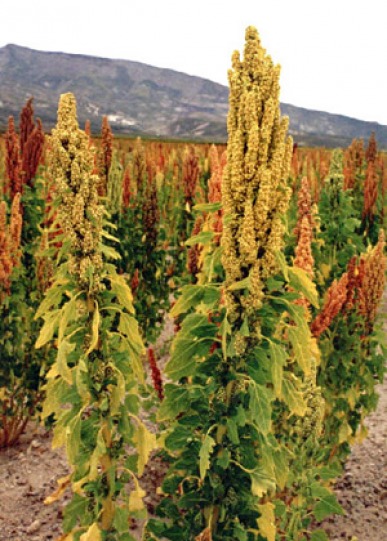You might not be able to pronounce it, but you’ll love the taste and texture of this delicious ancient grain pronounced keen-wah. Like Oatmeal and other whole grains, quinoa boasts a bevy of fiber and vitamins, but what makes it unique is its high protein content.
While everyone can benefit from Quinoa’s iron, calcium and blend of essential amino acids, this grain is especially good for vegetarians and vegans because it is one of only a few non-animal sources to be a complete protein, meaning it provides all eight essential amino acids.
So, you know it’s good for you. The big question: What does it taste like? It is one of my favorite foods in the world and has a texture similar to a hearty grit or polenta. Plus, in reality, it has very little taste which makes it an incredibly versatile base for any meal.
Since we’re talking about breakfasts that will keep your kids full and focused all morning, though, here are a few of my favorite quinoa add-ins:
If you want to prepare ahead, cut the peaches and apples beforehand, sprinkling lemon juice on the apples to keep them from bruising, and store in an airtight container in the refrigerator. Then you can pull them out and stir in right before serving. They won’t get bruised or mushy.
Extra Credit: Flaxseed is certainly as good in quinoa as it is in oatmeal, but if you’re looking to switch it up, try adding a tablespoon or two of wheat germ. The Mayo Clinic named it one of “10 Great Health Foods” because it contains niacin, thiamin, riboflavin, vitamin E, folate, magnesium, phosphorus, potassium, iron and zinc, in addition to being a good source of fiber and having a moderate amount of protein.
Join the ranks of those who have enjoyed this fantastic grain for the past 5,000 years and reap the health benefits!
While everyone can benefit from Quinoa’s iron, calcium and blend of essential amino acids, this grain is especially good for vegetarians and vegans because it is one of only a few non-animal sources to be a complete protein, meaning it provides all eight essential amino acids.
So, you know it’s good for you. The big question: What does it taste like? It is one of my favorite foods in the world and has a texture similar to a hearty grit or polenta. Plus, in reality, it has very little taste which makes it an incredibly versatile base for any meal.
Since we’re talking about breakfasts that will keep your kids full and focused all morning, though, here are a few of my favorite quinoa add-ins:
- Peaches: Peaches may seem like an unlikely complement to quinoa, but their juicy sweetness adds something special. Slice one up and mix it into a bowl of quinoa, along with a couple tablespoons of chopped almonds, and a handful of fresh blueberries. The fruit lends enough sweetness that I don’t even use anything to sweeten, but, if you so choose, the flavor of agave nectar is really quite spectacular when added to this combination.
- Apples: Nothing complements the subtle crunch of quinoa better than diced apple, cinnamon and chopped walnuts (you can substitute pecans if you so choose). Again, if you want to stir in a teaspoon or so of agave, be my guest. Or, if you’re really trying to eliminate sugar completely, the tiniest pinch of stevia will fully sweeten this dish.
If you want to prepare ahead, cut the peaches and apples beforehand, sprinkling lemon juice on the apples to keep them from bruising, and store in an airtight container in the refrigerator. Then you can pull them out and stir in right before serving. They won’t get bruised or mushy.
Extra Credit: Flaxseed is certainly as good in quinoa as it is in oatmeal, but if you’re looking to switch it up, try adding a tablespoon or two of wheat germ. The Mayo Clinic named it one of “10 Great Health Foods” because it contains niacin, thiamin, riboflavin, vitamin E, folate, magnesium, phosphorus, potassium, iron and zinc, in addition to being a good source of fiber and having a moderate amount of protein.
Join the ranks of those who have enjoyed this fantastic grain for the past 5,000 years and reap the health benefits!

 RSS Feed
RSS Feed

